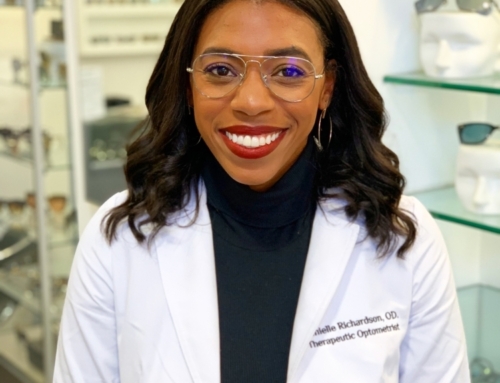We all know the benefits of a morning green smoothie but did you know this holy grail drink can also take care of your eyes? We don’t think about our eyes enough despite living in a digital world and using them all day. I always talk with my patients and urge them to consider their eyes when thinking about total body wellness. Just as we practice yoga and eat to keep our bodies strong, adding these ingredients to your morning green juice can keep your eyes strong too! Check below for 5 smoothie additions for healthy eyes that are also #whole30 compliant!
1. Kale & Leafy Greens
A no brainer smoothie addition, dark leafy greens are #1. This group is rich in lutein & zeaxanthin, antioxidants found in the macula. The macula is the area of your retina responsible for sunlight protection and detailed central vision. Taking in enough of this group helps reduce the risk of age-related macular degeneration (AMD), the leading cause of severe vision loss in adults over age 50 according to the American Optometric Association¹. Leafy greens may also decrease your risk for cataract formation and potentially glaucoma.²
2. Kiwi & Citrus Fruits
Kiwi, oranges, lemons, grapefruits, lime, and other citrus fruits pack a major punch of Vitamin C. Vitamin C is an important antioxidant required for proper eye function. Vitamin C can slow the progression of macular degeneration and cataract development.³ Cataracts are a natural part of aging but delaying the onset of cataracts by 10 years can potentially decrease the need for cataract-related surgery.³
3. Walnuts, Chia Seeds, or Flaxseed
Essential fatty acids like Omega-3, which the body doesn’t naturally make, are found in walnuts, chia seeds, and flaxseed. Omega-3 fatty acids improve dry eye syndrome and are necessary for healthy retina function.⁴ Using computer screens and digital devices causes increased eye dryness so these are great add-ins for those experiencing Dry Eye symptoms. As an added bonus, this group of healthy fats keeps your hair shiny and helps it grow longer.
4. Carrots
Carrots are packed with beta-carotene which the body converts into Vitamin A. Vitamin A plays a role in preserving night vision and protects the cornea, the front surface of the eye that provides us with clear vision. Vitamin A also helps improve Dry Eye Syndrome, a condition which millions of Americans suffer from. Symptoms can include but aren’t limited to dryness, redness, burning, watering, and intermittent blurred vision.
5. Blueberries
Blueberries are one of the highest antioxidant rich foods containing Vitamins C, K, and Manganese among other vitamins and minerals. The antioxidants in blueberries help fight off free radicals in the eye which can play a role in cataract formation and age-related macular degeneration development. Blueberries also contain Anthocyanins, a heart healthy compound that may improve night vision and ease eye fatigue.⁵
In addition to an annual visit to your eye doctor, a nutrient dense diet can help keep your eyes healthy. Antioxidant rich foods can improve dry eye symptoms, protect your eyes from harmful ultraviolet sunlight, and slow development of age-related eye conditions. These vitamins are best absorbed through dietary additions so adding these foods to your morning smoothie and kill two birds with one stone!
Sources:
1. Age-Related Macular Degeneration. American Optometric Association. https://www.aoa.org/patients-and-public/eye-and-vision-problems/glossary-of-eye-and-vision-conditions/macular-degeneration?sso=y
2. Higher Dietary Nitrate and Green Leafy Vegetable Intake Associated With Lower Risk of Glaucoma. Journal of American Medical Association. https://media.jamanetwork.com/news-item/higher-dietary-nitrate-and-green-leafy-vegetable-intake-associated-with-lower-risk-of-glaucoma/
3. Vitamin C. American Optometric Association. https://www.aoa.org/patients-and-public/caring-for-your-vision/diet-and-nutrition/vitamin-c?sso=y
4. Essential Fatty Acids Omega-3: DHA and EPA. American Optometric Association. https://www.aoa.org/patients-and-public/caring-for-your-vision/diet-and-nutrition/essential-fatty-acids?sso=y
5. Foods for Computer Eye Strain. Written By Michael Greger M.D. FACLM on January 13th, 2015. https://nutritionfacts.org/2015/01/13/foods-for-computer-eye-strain/





